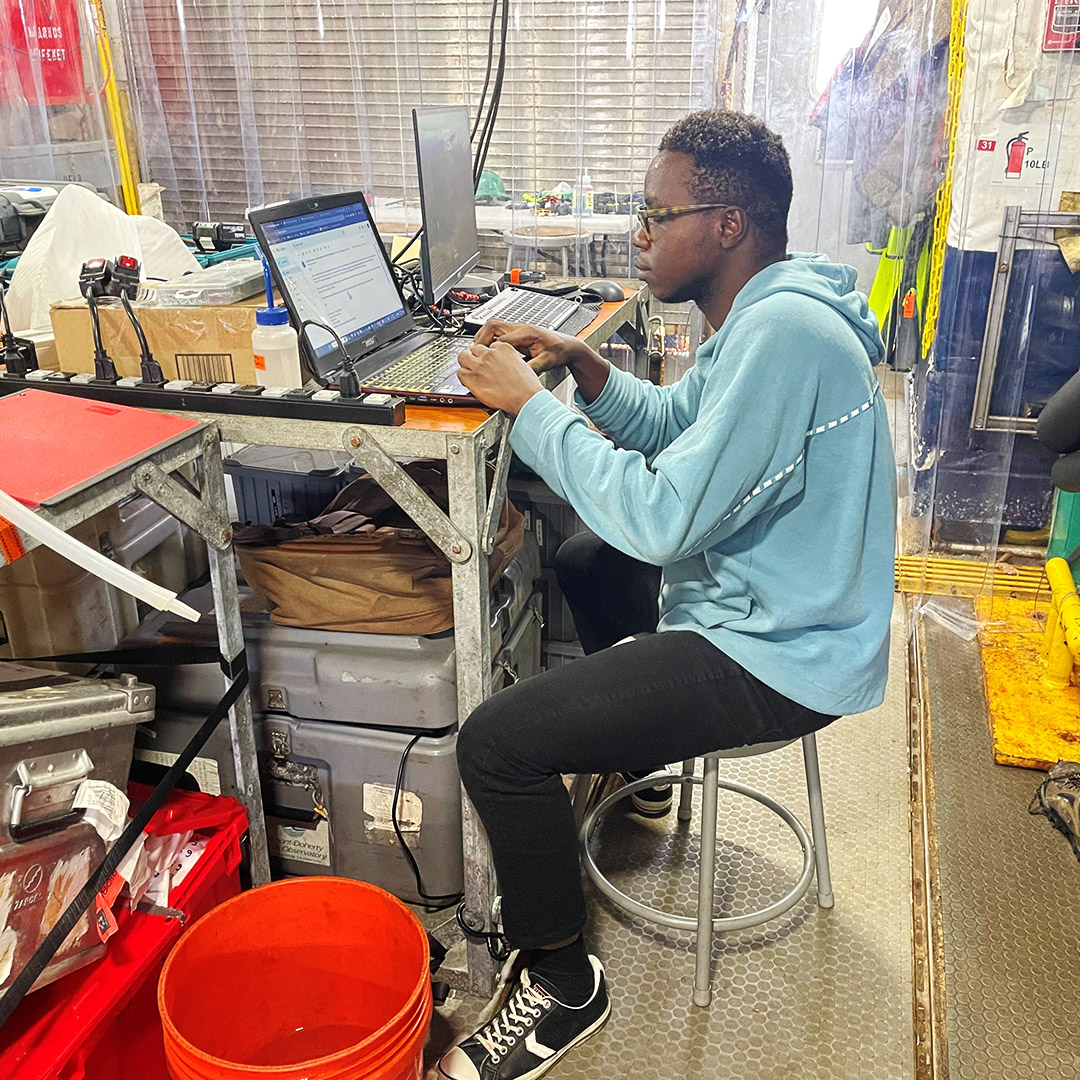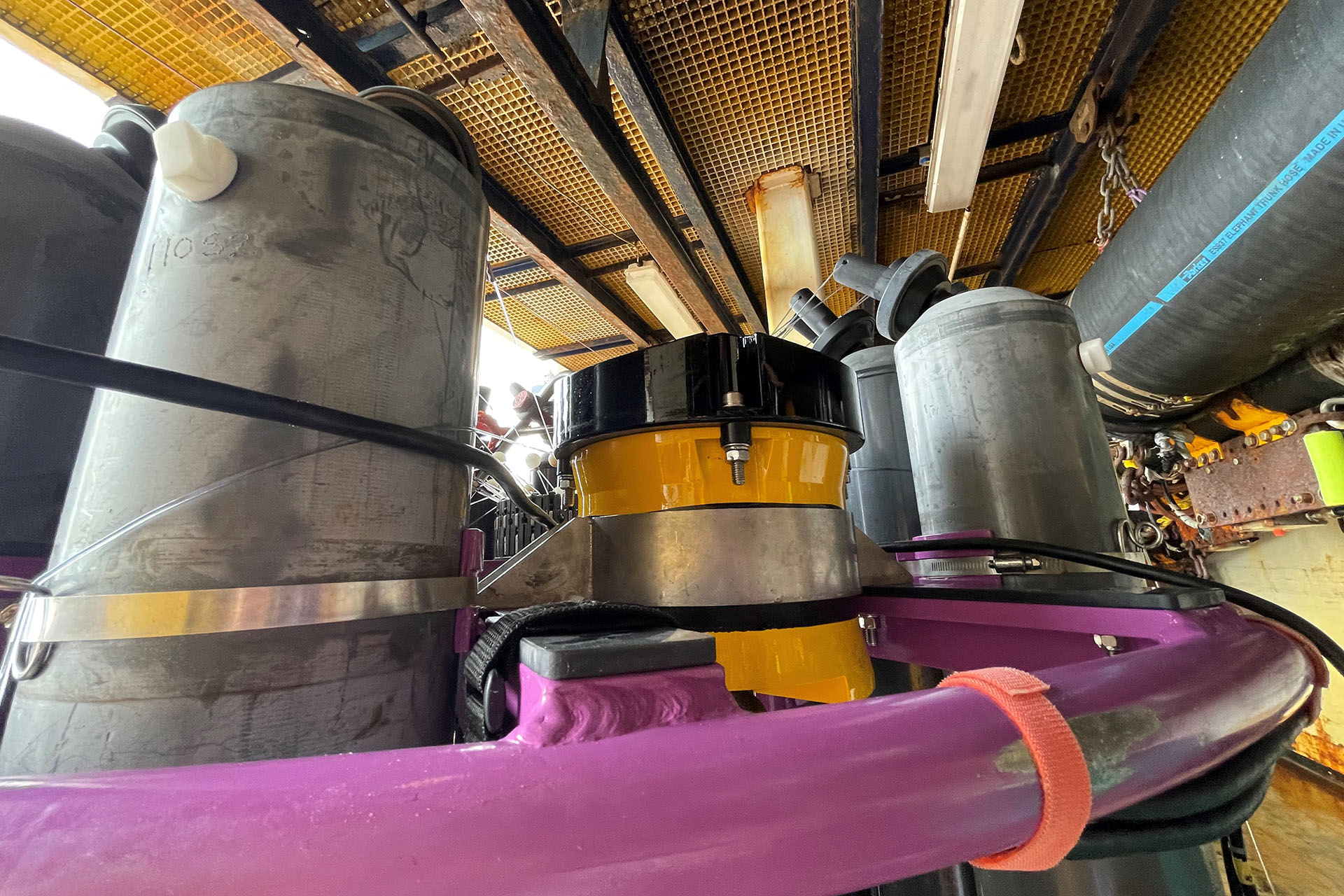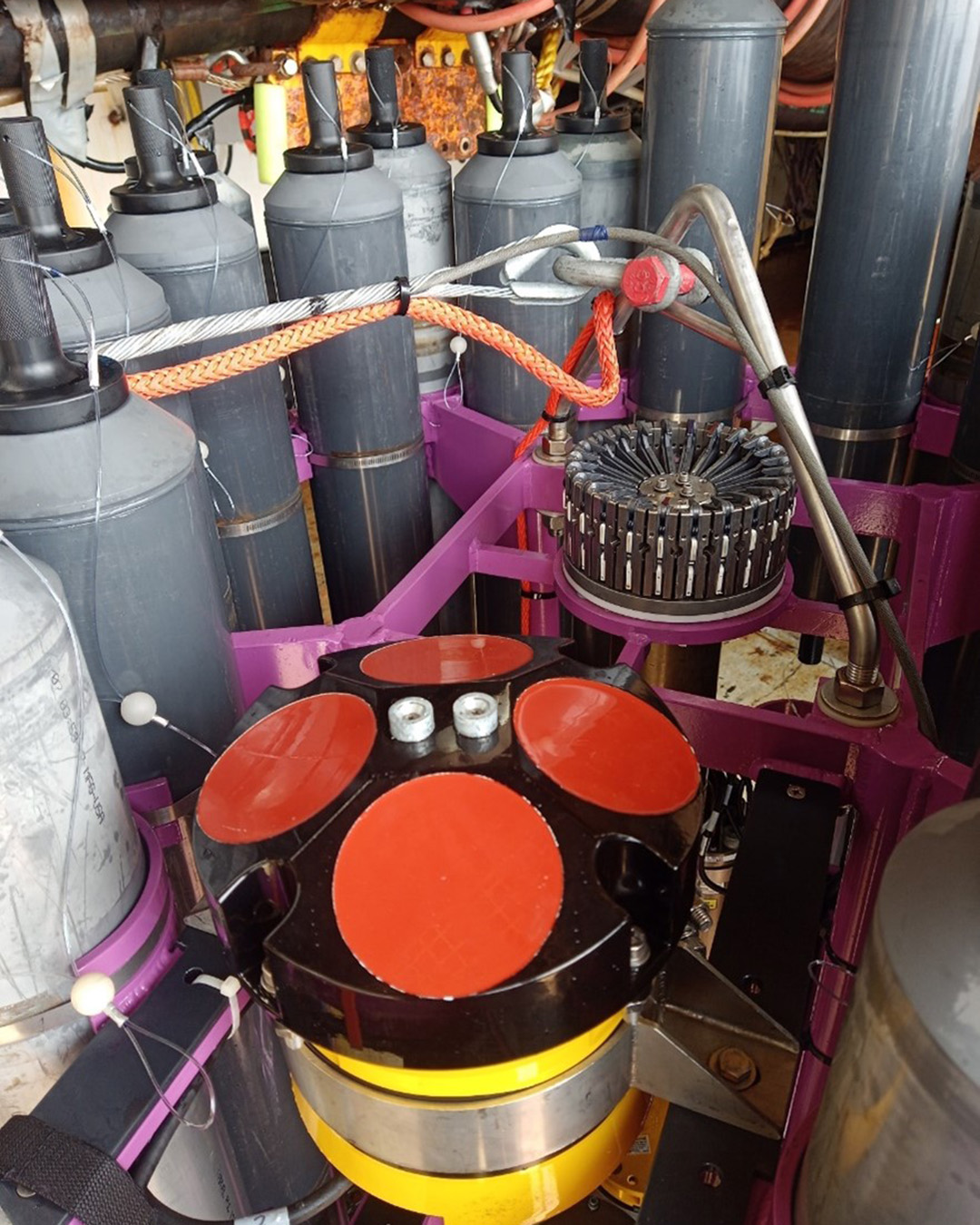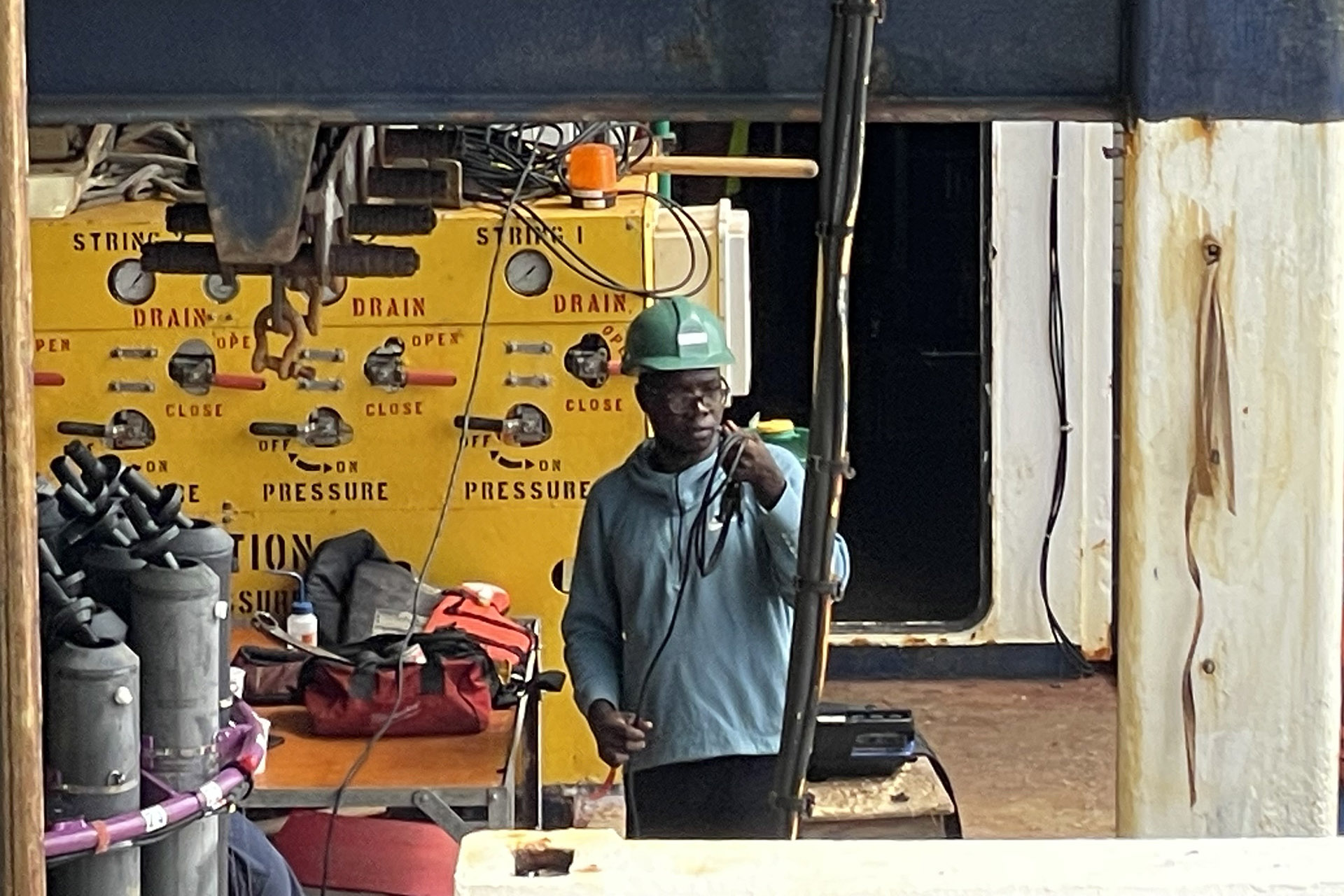GO-SHIP A13.5 Current Velocity Measurements
9 February 2024
My name is Adeola Dahunsi and I’m a doctoral student under the supervision of Prof. Ezinvi Baloïtcha at the University of Abomey-Calavi in the Republic of Benin. I am the lead technician for the Lowered Acoustic Doppler Current Profiler (LADCP) used to measure ocean current velocity on the A13.5 research cruise. My participation in this exciting research opportunity was made possible thanks to the support of both the Lamont-Doherty Earth Observatory at Columbia University and the Scripps Institution of Oceanography at the University of California, San Diego.
Prior to the cruise, my research was aimed at understanding the impacts of climate change on the hydrodynamics of the coastal areas along the Gulf of Guinea. My work included analyses of wind and wave model and observation data as well as past and projected rates of sediment transport. I hope to one day return to my home country of Nigeria and pursue pedagogy training in STEM education so that I can effectively promote the development of the next generation of marine scientists.
My participation in the A13.5 cruise was motivated by this future desire to impart knowledge and promote ocean literacy as widely as possible. This includes sharing the experiences acquired through the pre-cruise training on the LADCP deployment procedures and data handling practices provided by the LADCP lead PI, Professor Andreas Thurnherr, in Norfolk, Virginia, that occurred during the ship loading. Additionally, the hands-on experience I am gaining during the cruise itself is incredibly important to me.
Some of the common questions that I receive include:
Do I collect water samples for my work?
Unlike other rosette-dependent groups on the ship, I don’t collect water samples. The LADCP system consists of two acoustic doppler current profilers (ADCPs) which operate underwater and utilize acoustic signals to gather velocity profiles of short distances measured relative to the moving instruments. A complete LADCP system comprises the instrument platform, usually a CTD/bottle rosette set-up, the primary (downlooker) and secondary (uplooker) ADCPs, battery, Star and Deck Cables. The “Star Cable” also referred to as the “Octopus Cable”, just like the name implies, is a 5-mouthed cable used to link the two ADCPs together as well as power them from the battery while inside the water. When on deck, the other two mouths are connected to the “Deck Cable” through which the computer communicates with the ADCP system to start pinging before deployment and to download data upon retrieval.
The Uplooking ADCP set-up on the A13.5 CTD rosette. Picture by Adeola Dahunsi (University of Abomey-Calavi, Benin Republic)
According to the GO-SHIP manual for acquiring LADCP data, to create a comprehensive record of absolute velocities across the entire depth in the Earth’s frame of reference, it is necessary to eliminate the influence of the instrument’s motion. This is what I work on, alongside my onshore supervisor, Andreas Thurnherr, after every successful LADCP deployment. In order not to suck the fun out of it, let’s not bore you with the science of the process. It can be fun when it works and frustrating when it doesn’t. If you insist on getting the science, then I recommend to Google search the name Andreas Thurnherr who has written a whole lot about all you can desire to know from deployment to post-processing!
What does my lab work consist of (e.g., with water samples as well as computer monitoring)?
In a bid to acquire quality data, we do a pre-check as a quality control (QC) through pre-written software mostly from the lead PI, Andreas. For this correction and validation, we use other datasets such as timeseries from the CTD and data from the ship-mounted ADCP (SADCP). These are regularly backed-up onboard and on-shore to be double sure of data security.
The experience onboard R/V Marcus G. Langseth has been awesome thus far and I am excited about the long cruise we have ahead. Special thanks to my home supervisors who aided the timely completion of several pending tasks to allow me enough time to concentrate on the cruise without divided attention. I must also acknowledge previous trainings such as the one I had on the RRS James Cook which has made the work easier on this cruise.
In summary, investment in young scientists has a cumulative effect and I am grateful for everyone that has given me opportunity to learn, especially the PIs and colleagues on the past and present cruise. Teresa, thank you for reawakening in me the dream of being an expert teacher. Like you said, it is never too late to go for what we want!
Adeola Dahunsi, Lead technician for current velocity measurements
University of Abomey-Calavi in the Republic of Benin
All pictures by Teresa Kennedy (UT Tyler; URI) unless otherwise noted.






